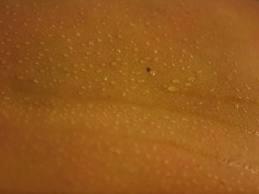
Description
This salty and watery secretion comes from glands in the skin pores. Maximum sweat rates of an adult can be up to 2-4 liters per hour or 10-14 liters per day.
Two types of sweat glands can be found in humans: Eccrine glands and apocrine glands. The eccrine sweat glands are the ones of interest here.
Function
Sweating is primarily a means of thermoregulation (body temperature regulation) which is achieved by the water-rich secretion of the eccrine glands. Evaporation of sweat from the skin surface has a cooling effect due to the latent heat of evaporation of water. Hence, in hot weather, or when the individual's muscles heat up due to exertion, more sweat is produced.
Colour
It is a colourless, slightly milky, salty fluid.
Shape
Like water.
Location
The eccrine sweat glands are distributed over much of the body.
This salty and watery secretion comes from glands in the skin pores. Maximum sweat rates of an adult can be up to 2-4 liters per hour or 10-14 liters per day.
Two types of sweat glands can be found in humans: Eccrine glands and apocrine glands. The eccrine sweat glands are the ones of interest here.
Function
Sweating is primarily a means of thermoregulation (body temperature regulation) which is achieved by the water-rich secretion of the eccrine glands. Evaporation of sweat from the skin surface has a cooling effect due to the latent heat of evaporation of water. Hence, in hot weather, or when the individual's muscles heat up due to exertion, more sweat is produced.
Colour
It is a colourless, slightly milky, salty fluid.
Shape
Like water.
Location
The eccrine sweat glands are distributed over much of the body.
 RSS Feed
RSS Feed
